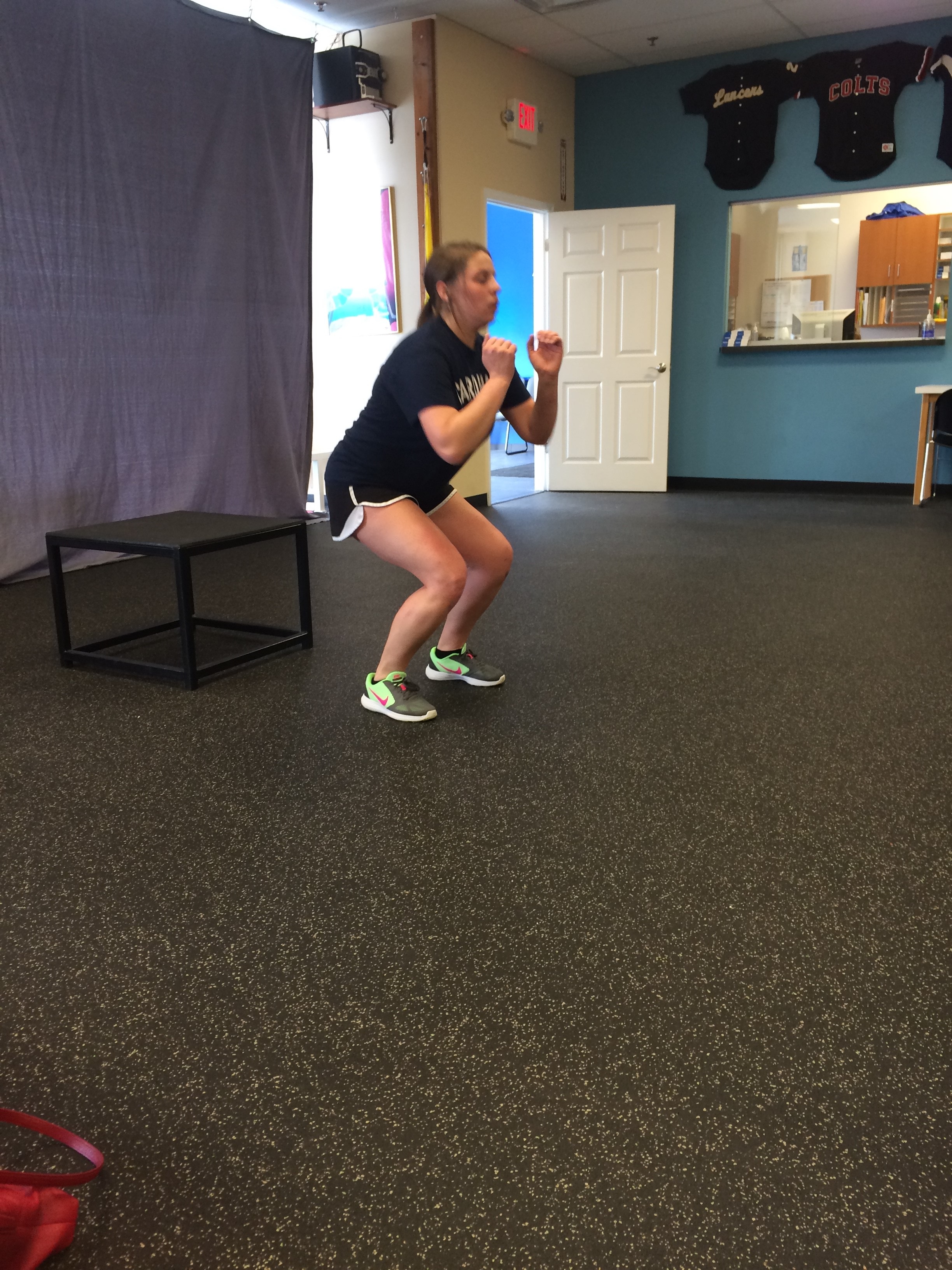
Our staff examined Kara at the end of February and she was told it would be beneficial for her to try the Dartfish test. She was 6 weeks post op at this appointment and was doing reasonably well. We wanted to see an exact percentage of her results, because she explained it felt “almost” back to normal. Kara was told a vague synopsis of how the test will go, and once she checked that her insurance covered the test she went for it.
Once Kara arrived for the test, she was skeptical of all the activities the therapist was asking her to perform. The reason being, when Kara would go to the gym she would be too nervous to try any lunges, squats, jumping, etc. So, when the first thing the therapist asked her to do was hop on one leg and other series of little jumping, she was wondering what the rest of the test would be like.
The whole test consisted of the therapist directing Kara to move her knee in ways where he could analyze her recovery by eye sight. When Kara was warming up she had rope ladder in front of her, where should would have a series of hopping/jumping with both legs and single-legged in between each section of the ladder. This warm up took about 15 minutes to make sure Kara’s knee was loose and ready for the test.
Once the test started, the therapist got his camera set up to record her results. For each exercise, Kara had two practices and then the third was recorded. One of the first tasks was to extend her operative leg and bend the opposite one while trying to touch a box (about 18” high) with her behind. She had to do this task on the other side as well, bending her operative knee and extending the other while trying to sit. The second test was more pressure on her knees because she was trying to jump single legged at max distance. Once again, the therapist gave Kara two attempts and then the third was marked with a piece of tape (these movements were not recorded on the camera). After the tape marks were on the floor, the next task was to hop single legged from side to side in between the tape marks three times quickly.
Finally, at the end of the test, the therapist measured what he could with a measuring tape. Based off of the tape on the floor, the therapist could see those results first hand. Kara’s results, for that portion of the test were 15% and 18%, where people try to aim and get 10% or lower. The activities that were recorded on the camera will be analyzed after the videos are uploaded to the computer. He explained that if those results come in and are 85% or better, Kara does not need any more therapy sessions.
Kara left with some exercises that the therapist gave her to strengthen her knee as well as confidence. She had a feeling her knee was healing, but was nervous to do exercises like squats or jumps because she did not want to re-tear her ACL. When all the results are presented to Kara, she will know if more therapy is needed. Also, after taking the test, she has more confidence to exceed her workouts because the test showed her what she is capable of doing. In due time, she will be able to return back to soccer without the anxiety of hurting herself and enjoy her activities and daily life.
